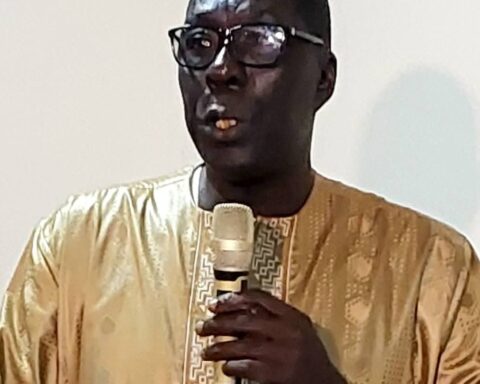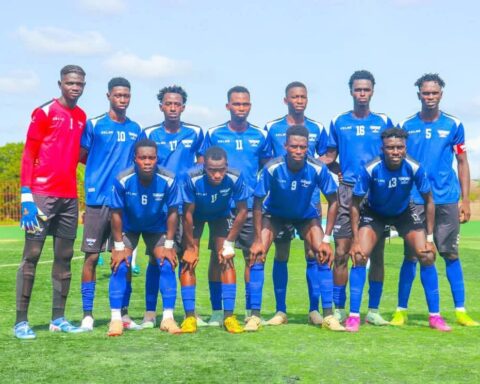By: Foday M. Sillah
Introduction
To begin with, the novel is an old genre of literature, dating back to the medieval period in the 18th century. Most scholars define it as an interesting narrative with a plot that develops through the thoughts, actions, and speeches of characters. Since the first novel, The Tale of Genji, the genre has undergone several periods of development, each with its own set of conventions. However, according to Randal Jerrell, every novel, regardless of era, aims to represent life in its full depth.
In so doing, novels contain elements that authors employ to build the case of their stories and convey messages to their readers. These elements, though written on pages, are what make stories appear to represent life. From actors/actresses to the acted upon, the novel is cooked and dished out to readers like a Monday morning ´´mbahal´´ at Westfield. The varying application of these prose elements forms the heart of the differences shaped by the historical development of the novel. Each era had conventions to follow, until postmodernism arose in the second part of the 20th-century and defied those conventions with fragmented narratives, the use of irony, metafiction, and other experimental styles.
The Battle of Beliefs, by Muhammed Y. Darboe, is a satirical and historical novelette that critiques and narrates the socio-political landscape of the implied settings of Sonko-du – The Gambia, Liberia, Nigeria etc. The book is a novelette because it falls short of a novella and novel in terms of length and complexity, not in weight. The fiction is historical and satirical because it narrates human failure and folly in Sonko-du, aiming verisimilitude. Launched on July 12, 2025, it follows the pattern or form of postmodernism, challenging conventional literature and setting a new path for Gambian literature.
Intertextual Perspective of the Novelette – A Parody and Pastiche that Enhance Understanding
From Julia Kristeva’s perspective of intertextuality, The Battle of Beliefs is a mosaic of quotations, shaped by other texts. Darboe’s fiction dances to the Bakhtinian dialogism and heteroglossia as well as Genette’s Transtextuality. As Darboe himself writes: There are stories set in fictional lands that echo too closely the truths we live. The Battle of Belief is one of those stories. Thus, his text, though very unique, is shaped by multiple voices, influences, and relationships with other texts and contexts. The author´s background as a student of literature, a satirical essayist, and a political critic forms this achievement.
As a record of history, The Battle of Beliefs, which narrates a shift in political ideology in Sonko-du, bears some resemblance to some of the preceding novels. Animal Farm, reflects the historical development of Communism and how Russia came to adopt it; Things Fall Apart explores the disruption caused by the intrusion of Western culture into the Igbo society in Nigeria; and while Robinson Crusoe is a travelogue or an adventure, Defoe also lightly narrates a change in economic order, giving a transition from feudalism to capitalism with a glimpse of British imperialism around the globe in the 18th century.
As a satire, the book communicates closely with most satirical novels like Animal Farm, where the communist revolution collapses into tyranny as the new leaders (the pigs) mirror the old (the humans). The Battle of Beliefs, through parody, tells a similar story – highlighting how revolutions can fail when leadership falters. The use of allegory, symbolism, and fable is prevalent in both Animal Farm and The Battle of Beliefs. Both Darboe and Orwell apply these techniques to effectively communicate their messages. The allegorical settings and characters in both fictions, for example, represent revolutionary actors – Animal Farm pointing to the Soviet Union (with its revolutionaries), and The Battle of Beliefs reflecting post-colonial African nations (with their revolutionaries).
Furthermore, Muhammed Y. Darboe smartly uses the culture of his people, the social fabric, proverbs, and traditional settings like the bantaba to create a lived experience, resulting in an authentic and rich narrative world. Using pastiche, he capitalises on the prevailing social norms and realities of his society, such as fishing, ferrying, sitting around woodfire, youth festivals, naming ceremonies, social media buzz, and issues like FGM, to reconstruct and preserve history. Chinua Achebe, in a similar vein, draws from the lived experiences of the Igbo people, including the New Yam Festival, funeral rites, the concept of chi (personal god), polygamy, and the Igbo system of governance, to communicate his message with cultural depth and clarity. Through the norms and practices of their respective settings, both authors do more than just tell stories; they immerse readers in the living cultures of their people.
Thoroughly, both Achebe and Darboe treat storytelling with profound respect. Darboe, through the voice of Jali Demba, affirms: “Not for glory. Not for praise. But because someone must remember. And because remembering is a form of resistance.” Achebe, in his essay What Has Literature Got to Do With It?, writes: “The story is our escort. Without it, we are blind.” In another paraphrased statement, he declares: “It is the storyteller who makes us what we are, who creates history. The storyteller creates the memory that the survivors must have — otherwise their surviving would have no meaning.” Both reflections reinforce the character of Jali Demba as someone who remembers, tells stories, and believes that through memory and narration, a better future can be rebuilt.
Prose Elements – Devices that Thread the Novelette
The novelette is a dynamic work that blends a cross-section of literary elements to achieve the purpose of reminding, enlightening, and awakening readers to duty. Also, the story is smartly written in such a way that it accommodates a number of literary criticisms – Formalism, Culturalism, Structuralism, Psychonalytics, etc. Muhammed’s blend of flawless language and cultural nuances is very helpful in understanding the psychological beliefs and inner states of characters like Afang-lang and Sofia. Published by the Authors Drip, The Battle of Beliefs is set in Sonko-du, an allegory of some post-colonial African countries, including The Gambia, Nigeria, and Liberia. It was published in 2025, and contextually, it reveals the ordeals faced by post-colonial African countries in building democracies after dictatorship.
In characterisation, Muhammed Y. Darboe has a cleverly structured and interesting plot that unveils the characters of the book, revealing their personalities and qualities which tell readers who the characters are, their motives, and whether they are static or dynamic. He gives readers the test of direct and indirect characterisations, with the former coming on pages 11 to 13 of the novelette. To enhance readers’ comprehension of the conflict, Darboe gives two embodiments of the conflict: the protagonists and the antagonists. The protagonists, such as Bakary and Papa Manneh, are represented by Jali Demba, who is the symbolic character of the novelette. Meanwhile, the antagonists are represented by tyrant SEMBEH-ti and the reluctant revolutionary Keeluntang.
In terms of plotting, the actions appear in linear form with minimal interruption, except for a flashback which takes the pages of chapter four. Linearly, the story maneuvers, featuring the rise and fall of the Force for Change´s revolution until the author posits a future where ´´A Moses Will Come´´. Through effective storytelling devices, vivid language, and deliberate word choice, Muhammed breathes life into characters and themes. These techniques elevate the work, making it not just readable but memorable. The narrative techniques used by the author are what make the reading of the story a heavenly voyage. The author demonstrates an utmost precision in diction, using rudimentary, yet poetic word choices that sometimes appear like a verse. In light of narrative point of view, the author drives it brilliantly, employing a skill rare of authors. He uses three different points of views: First person, third person limited, and third person omniscient to give readers nuanced perspectives.
The author skillfully uses allegory and symbolism through fictional characters and settings like SEMBEH-ti, Keeluntang, and Sonko-du to represent postcolonial African leaders and nations, highlighting the political realities of the region. He adopts satire and fables to critique leadership and expose societal flaws, often through irony, humor, and personified characters like frogs and trees. Dialogue and imagery – visual, auditory, olfactory, gustatory, and tactile – enhance the narrative of The Battle of Beliefs, making characters and scenes come alive for readers. Darboe equally utilises irony, both situational and verbal, to underscore the gap between political promises and actual outcomes, reinforcing themes of corruption and betrayal.
The use of motifs such as light and darkness, freedom, and recurring symbols like notebooks deepens thematic resonance of the novelette. Literary techniques like code-switching, epigraphs, and other devices such as metaphor and rhetorical questions add fluidity, cultural richness and complexity to Darboe’s story. As seen in the use of marching bands, national anthems, and coded drumming, he counts on music as a powerful tool to reveal characters’ emotions, moods, and resistance, while reflecting victory, silence, or dissent. His immense use of spectacle, such as costumes and scenery, enhance imagery and help convey key themes, aligning with Grace Chapman’s view on their thematic significance.
Muhammed Y Darboe, the author of the battle of beliefs
The Didactic Message of the Novelette – A Pricker of Mind and Soul
The Battle of Beliefs is not merely a political or ideological struggle; it is a deeply human one, rooted in vulnerability. The internal conflict between pessimism and hope reflects a soul grappling with what it has endured and what it dares to dream. On a societal level, clashing beliefs among forces and citizens represent not just difference but divergence in how communities interpret their collective wounds and aspirations. For example, in the last page of Chapter three (3), Muhammed laments through Sulayman ´´we argue not because we hate each other, but because we cannot argue on what pain should feel like.” This line lies at the emotional and philosophical heart of the Battle of Beliefs. It reveals that beneath ideological disputes and passionate debates lies a deeper truth. The author cautions the readers that while disagreement is natural and even necessary, it should not become a source of vilification. In short, he invites readers to approach belief (their own and others’) with humility. And while people may argue, even battle, over ideas, they must not lose sight of the shared humanity from which those beliefs arise and the truth in those bitter arguments, just as the author puts it ´´These debates, though bitter, remind us that even in discord lie threads of truth´´.
Beyond that, the chronicler, Jali Demba, who is invisible, neither leading nor following, but remembering, serves as both witness and conscience. His invisibility is symbolic as he represents the often-unseen forces that carry memory, morality, and truth across time. He is not an active participant in the struggle; however, he is deeply affected by the ailing revolution, and more importantly, he ensures that the struggle is remembered. In remembering, the author affirms that even in a world divided by beliefs and wounded by conflict, there is meaning to be preserved, lessons to be drawn, and dignity to be honoured. As a reader, one marvels at the author´s witty and ethical weight of the invisible narrator’s presence. He uses Jali Demba to remind readers that someone is always watching over their actions. Thus, it is a quiet reminder that actions, however private or public, are not lost; they live on in memory, in legacy, and in impact. While Jali´s role speaks with the truth commissions established in people´s real lives, his involvement teaches that in every battle of beliefs, there is a need for someone to bear witness, to carry forward not just what happened, but what matters.
Penultimately, despite the betrayal and struggles in Sonko-du, the author does not reject the hope that someone will come to lead the country to the freedom yearned for so long but he cautions not to turn that person into ´´the last set of Moses´´. In pg87, the author artfully writes:
If he (Moses) must truly come – Let him not be crowned. Let him not be turned into a monument while still alive. Let him not be worshiped, but watched. Let his strength be measured not by how many followers he has, but by how many truths he dared to speak even when they shook his throne.
This artful statement is a powerful warning against idolisation. It reflects a deep skepticism about hero-worship and the dangers of placing blind faith in a single individual. In saying they should not be crowned or turned into a living monument, Muhammed adeptly reminds readers that leaders are people; they are not gods. When we elevate leaders beyond accountability, we risk corrupting them, or worse, betraying ourselves by surrendering our freedom and future. This reflects a clear and sobering truth because it is often not power alone that corrupts leaders. It is the people’s uncritical admiration that prepares the ground for betrayal. The author is convinced that when we worship a leader, we burden them with unrealistic expectations, discourage arguments and accountability, and create a culture of silence. The author seems to fear not just betrayal by the leader, but betrayal of the people’s cause, when hope turns into blind loyalty and belief is no longer questioned. Thus, we can respect leadership, but must resist deifying it. And most importantly, we must take responsibility for our collective destiny, rather than outsourcing it to a single figure because as the author writes ´´this country…this tiny piece of land we call home – it cannot afford passengers. Everyone must drive or be dragged´´.
Conclusion
The Battle of Belief signifies a profound struggle over hope, conviction, faith or ideology within a character or between opposing forces across the land of Sonko-du. It reflects an internal conflict between doubt and hope, or a larger clash of societal perspectives where belief itself becomes the battleground. According to Abdoulie Senghore, a lecturer at the University of The Gambia, there are a few things that make a work of fiction relevant. It aims to entertain and educate, engage and stimulate readers in an effort to expand their conscious awareness, and aspires to reach readers on a more psychological level. Relying on his dancing pen, the author is able to achieve these three areas through the presentation of humanistic references in the forms of conflict, betrayals, fears, and desires. Besides, the author skillfully demonstrates connection with earlier authors and aptly employs unique prose elements to set his novelette above the threshold of conventional novel writing. In doing so, he has thoroughly established himself as a creative novelist whose burgeoning art is very invaluable to the evolving literary industry of The Gambia. While the story provides moral lessons in politics and culture, it challenges the norms of prose writing and paves the way for this and later generations of writers to use it as a model of creative writing.
The post Exploring The Battle of Beliefs: A Didactic Novelette that Echoes Intertextuality, Challenges Convention, and Paves the Way for Creative Writing in Gambian Literature appeared first on The Alkamba Times.








